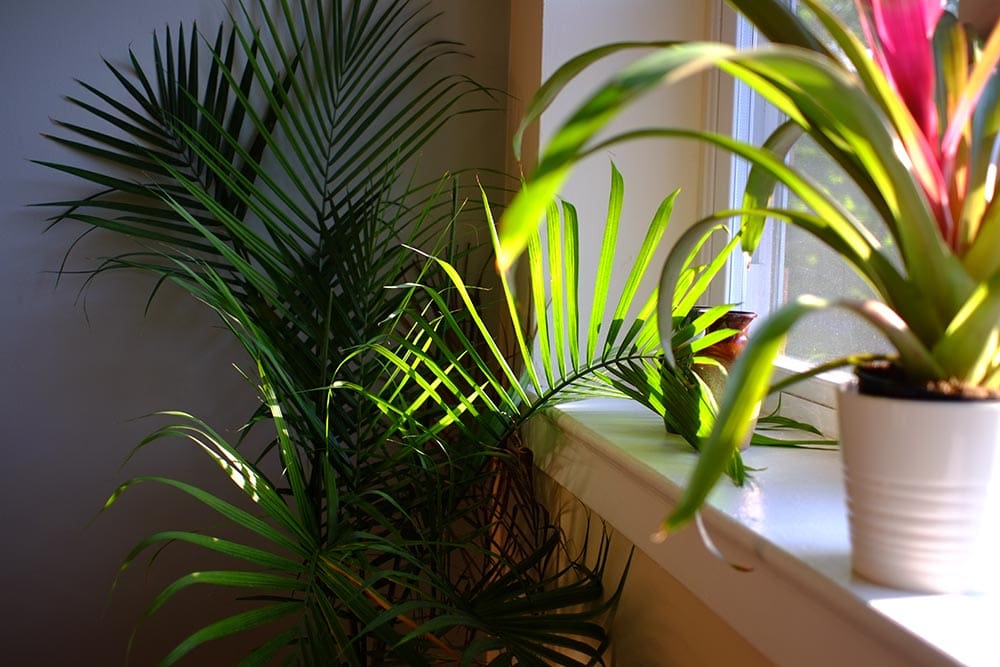How To Make Potting Soil for Majesty Palms (3 Steps)
-
Pete Ortiz
- Last updated:

Majesty palms are palm trees that grow naturally in Madagascar. In the wild, they can grow to 100 feet tall, and as house plants, they can grow to 15 feet, although this depends on the pot and the amount of space the plant has. However, while some consider the majesty palm a reasonably easy indoor plant to grow, others point to its demanding humidity, temperature, and light requirements making it a challenging plant for indoor growers.
As well as needing a humid environment, majesty palms prefer damp soil conditions and require indirect light. Light can be managed through proper placement within the home, but to get the best potting soil, it may be necessary to make your own mix that combines sandy soil with additional sand and peat moss. This helps replicate the soil the palm would get in its natural habitat and gives it the best chance of healthy growth.
About Majesty Palms

Ravanea rivularis, more commonly known as majesty palms, are native to Madagascar. They grow in tropical parts of the region, where they enjoy semi-arid conditions. They are slow-growing plants, especially when grown indoors, but when given ideal growing conditions, they can grow to nearly 100 feet outdoors and as tall as the ceiling indoors.
We tend to think of palm trees as preferring dry conditions and being drought-tolerant. However, majesty palms hail from semi-arid, tropical regions. This means they prefer damp conditions and do not fare well when they don’t get adequate water. The majesty palm does well in normal household humidity, but if you can provide additional moisture, especially in the winter, these conditions will yield optimal growth.
The 3 Steps on How to Make Potting Soil for Majesty Palms
To create the best potting soil for majesty palms, you must try and closely replicate the soil from its natural habitat. This means that general all-purpose and other commercial potting soils won’t provide ideal conditions. You can quite easily make your own majesty potting soil using the following ratios:
1. Add Peat Moss
Two parts peat moss: Peat moss is a combination of dead, fibrous, organic materials. It is also known as sphagnum moss or bog moss. It is sterile and offers good drainage.
2. Add Sand
Two parts sand: Sand is perfect for drainage because moisture runs through the grains of sand and is not allowed to waterlog the growing medium.
3. Add Loam
One part loam: Loam is another good drainage solution for potting soil. Loam is made up of sand, clay, and soil.
Because majesty palms benefit from soil with a lot of natural drainage, there can be a large build-up of liquid under the pot. You will benefit from having something under the pot to collect this water.
Do Majesty Palms Get Big?
In the wild, majesty palms can grow as tall as 100 feet high. When grown indoors, they won’t grow this tall but can still reach a height of 10 feet if they have the space and an appropriately sized pot. If you want to keep an indoor majesty palm shorter, keep it in a smaller pot rather than transplanting it to a larger one as the tree grows.

How Wide Do Majesty Palms Grow?
Similarly, majesty palms will grow wider in their natural habitat than they will when kept in a pot, but they will usually grow to the width of their pot plus a few inches. Choose a container slightly smaller than you want the plant to grow.
How Long Does It Take for A Majesty Palm to Grow?
The rate at which a majesty palm grows depends primarily on its age. Young palms grow quicker, and a majesty palm will grow up to a foot a year for the first 5 or 6 years. Once the palm reaches around 5 feet tall, growth will slow, and a mature majesty palm may only grow 2 inches per year.
How Do You Keep a Majesty Palm Alive Indoors?
To help a majesty palm thrive indoors, you must provide it with adequate moisture, humidity, temperature, and light. Use appropriate potting soil that contains plenty of sand and ensure that the soil is not allowed to dry out at any point. Provide the palm with around 6 hours of bright light each day and try to ensure a humid environment throughout the year.
Conclusion
The majesty palm is native to Madagascar and enjoys a humid environment. Unlike most palms, it prefers moist conditions rather than dry, and the potting soil should not be allowed to dry out. You can create your own potting soil by combining loam, sand, and peat moss, ensuring good drainage and providing the ideal growing conditions for this incredible-looking plant.
Featured Image Credit: Jana Milin, Shutterstock
Contents




